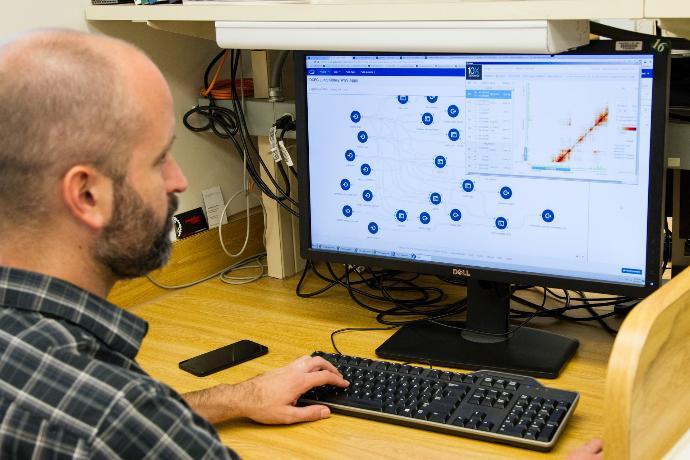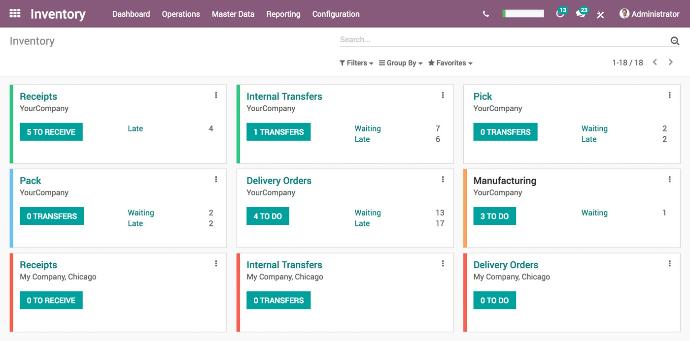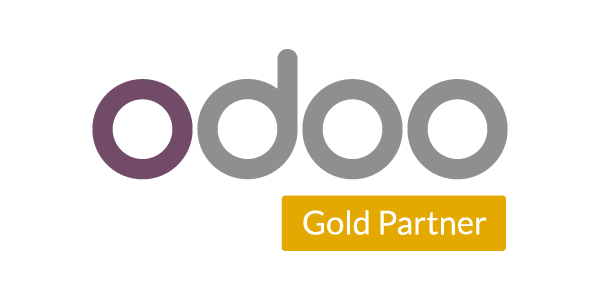If you're in charge of managing inventory, you know how difficult and complex the task can be. Your job includes figuring out how to optimize inventory, coordinating carrier schedules and keeping up with inventory nuances (fresh products, special packaging, etc.), and that's just a small part of the job! There’s an overwhelming amount of elements to be taken into consideration and while they are what makes this job so great, they are also the reason why this job can be so complex. Fortunately, there are software solutions available that can make your life easier, in particular, Odoo's software. Let's take a look together.

Fast and reliable stock management
The goal of inventory management software is not only to simplify your daily life but to also help increase revenue. For this to happen, your data needs to be able to be centralized in one place. This is the case in Odoo, you can manage all your inventories and product flows within the same tool, even if they are from different warehouses or customers.
Odoo's intelligent double-entry inventory system ensures real data reliability and cuts down the amount of time needed to complete tasks. In fact with Odoo, you no longer have to perform manual re-entry: there is no need to enter stock removal or changes. Thanks to Odoo's system all these operations are tracked by inventory movements between available storage locations.
Enable enhanced anticipation with alerts and automation
Of course, we all know that inventory management is a long-term game. Ideally, everything runs smoothly, but every day we run the risk of unexpected events disrupting this well-oiled machine. Imagine if your carrier went on a strike, your warehouse would be filled up with unmoved inventory. Add bad weather and flooding to the equation and your inventory could be damaged. A prolonged power outage and the entire cold chain process can be called into question. As you can see, there are many little parts that can fall out of place and disrupt the system you try so hard to maintain.
Of course, the unforeseeable events that we have just mentioned remain beyond your control. You will have to deal with these unexpected events by having specific safeguards in place (having an emergency power supply and monitoring and reinforcing the building...) in place.
However, for those events that are manageable, you might as well set up a system that helps you anticipate them. This is what you get with Odoo's customizable alerts. You can, for example, create alerts for products or suppliers that appear when a seller creates a quote. Additionally, thanks to Odoo's automation features, you can choose to generate purchase order proposals when a minimum inventory count is reached to replenish your supplies. The same goes for supplier negotiations: if you want to negotiate a price with your suppliers for each specific purchase, an automatic request for a quote can be triggered as well.
Routing, the cornerstone of inventory management
Of course, no one would want an inventory management software without a powerful routing function. The creators of Odoo are well aware of this. This is why they have developed advanced warehouse management functionalities for Odoo. Drop-shipping, cross-docking, and multi-warehouse management are all features included in Odoo's ERP software.
With Odoo, you can also develop your personalized storage and pick-up strategy: FIFO, nearest available area, LIFO, etc. The same goes for the ordering process: you can decide to deliver to your customer in one step (delivery note) or break the process into parts (collection, packing, dispatch). Your product routes and "push & pull" routes can also be customized so that you can automate transfer orders between warehouses and locations.
The Odoo advantage for Inventory management
When it comes to inventory management, one of Odoo's main advantages is its ability to interconnect. Not only with the rest of the Odoo suite but also with carrier softwares from UPS, USPS, FedEx or DHL. And If you work with any other carrier, your integrator can easily make the connection. Captivea has, for example, developed connectors for Colissimo, TNT and Chronopost. And because of its powerful API, the Odoo warehouse management system can do almost anything you want: integration with 3PL, hardware integration (scales, scanners, RFID), etc.


Captivea Odoo Gold partner
In addition to inventory, Captivea, Odoo Gold Partner, supports companies in the improvement of their factory production and performance.





